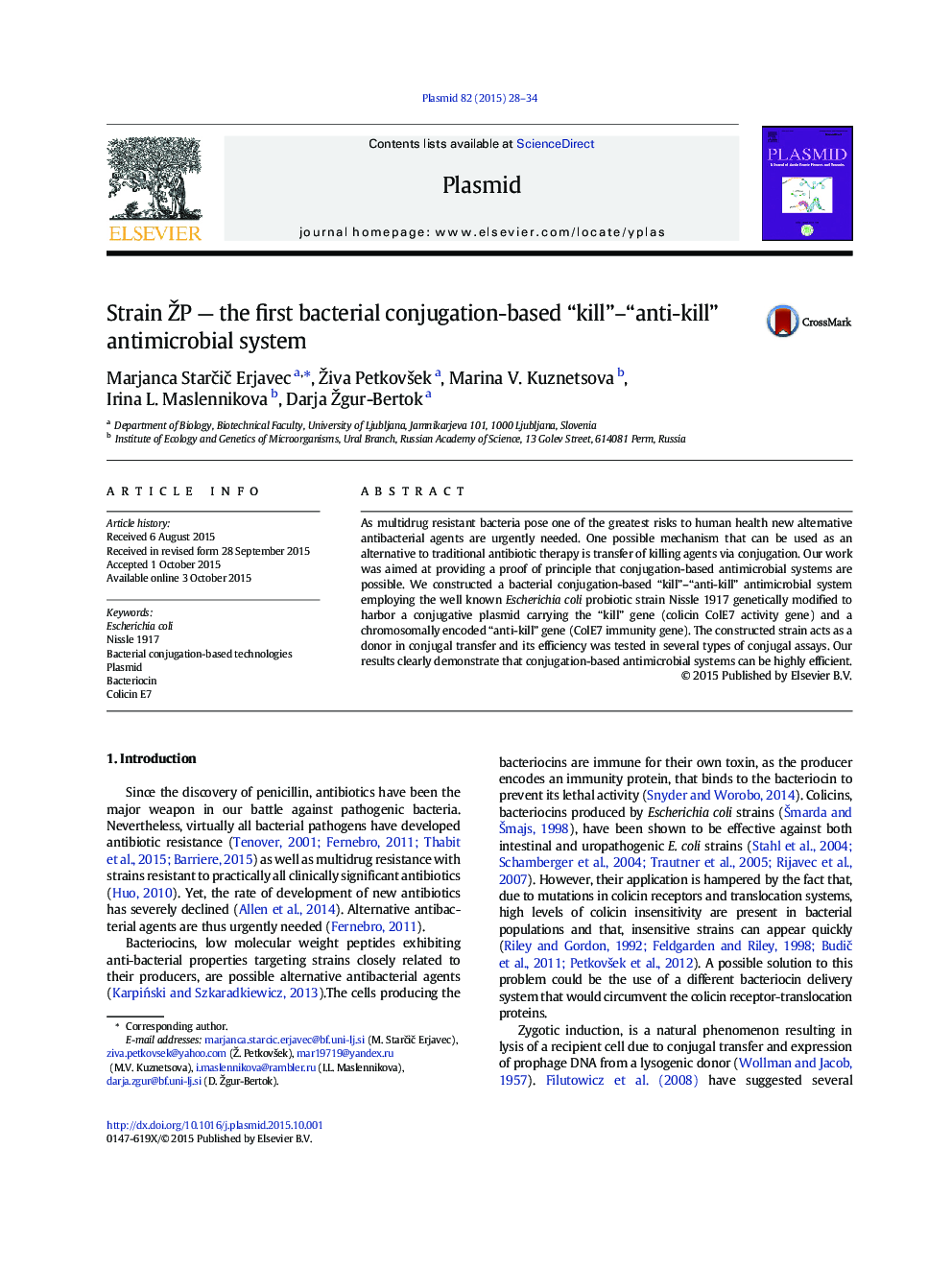| Article ID | Journal | Published Year | Pages | File Type |
|---|---|---|---|---|
| 2824062 | Plasmid | 2015 | 7 Pages |
•The first example of a bacterial conjugation-based antimicrobial system is presented.•The strain ŽP uses a “kill”–“anti-kill” mechanism based on colicin E7.•The strain ŽP showed in conjugation assays a remarkable killing effect.
As multidrug resistant bacteria pose one of the greatest risks to human health new alternative antibacterial agents are urgently needed. One possible mechanism that can be used as an alternative to traditional antibiotic therapy is transfer of killing agents via conjugation. Our work was aimed at providing a proof of principle that conjugation-based antimicrobial systems are possible. We constructed a bacterial conjugation-based “kill”–“anti-kill” antimicrobial system employing the well known Escherichia coli probiotic strain Nissle 1917 genetically modified to harbor a conjugative plasmid carrying the “kill” gene (colicin ColE7 activity gene) and a chromosomally encoded “anti-kill” gene (ColE7 immunity gene). The constructed strain acts as a donor in conjugal transfer and its efficiency was tested in several types of conjugal assays. Our results clearly demonstrate that conjugation-based antimicrobial systems can be highly efficient.
